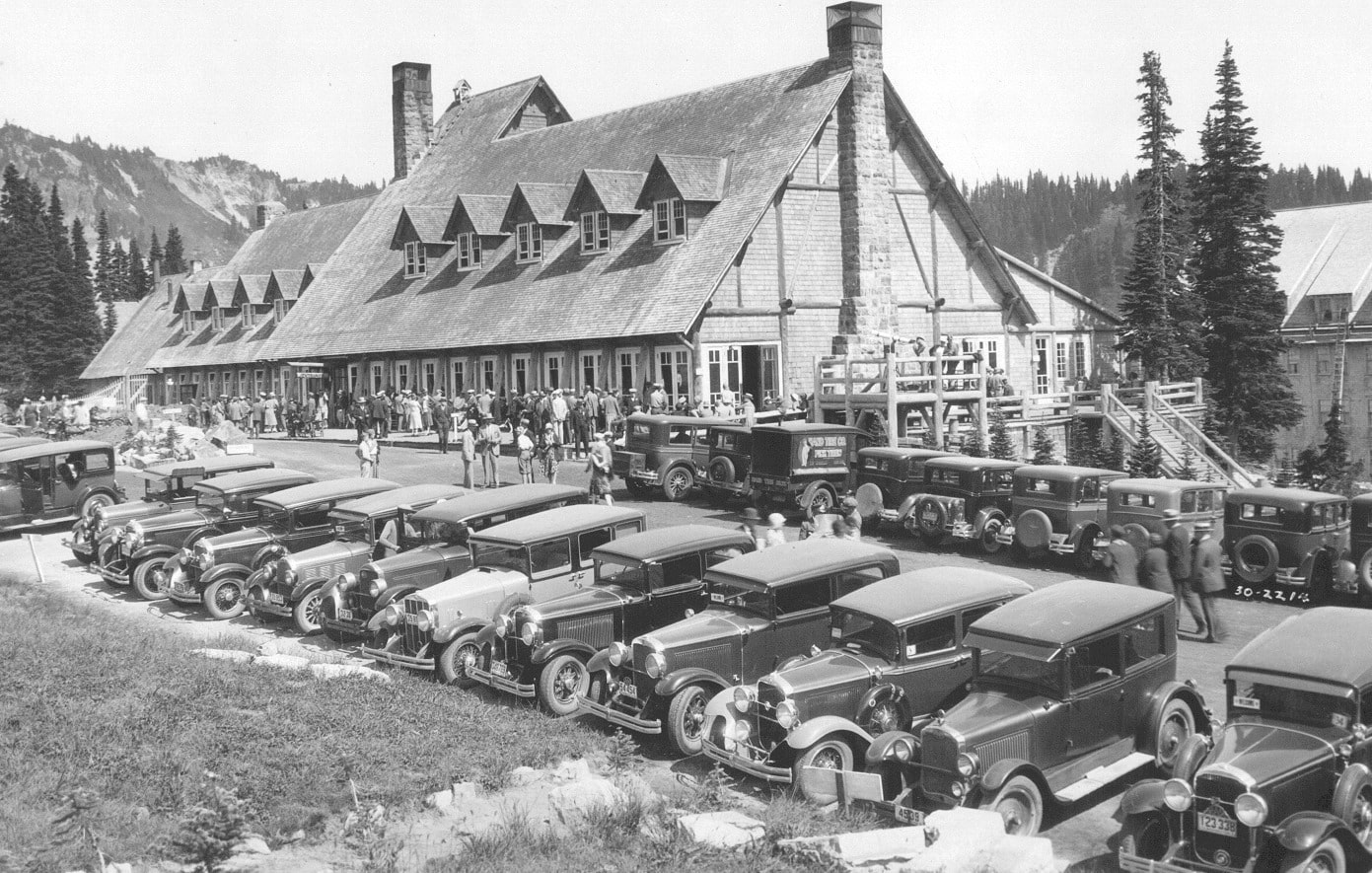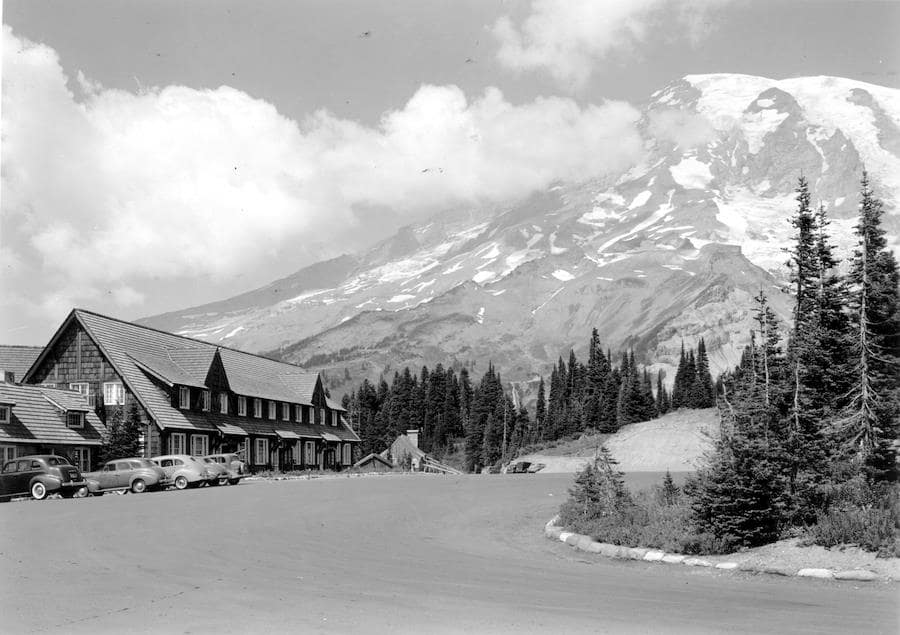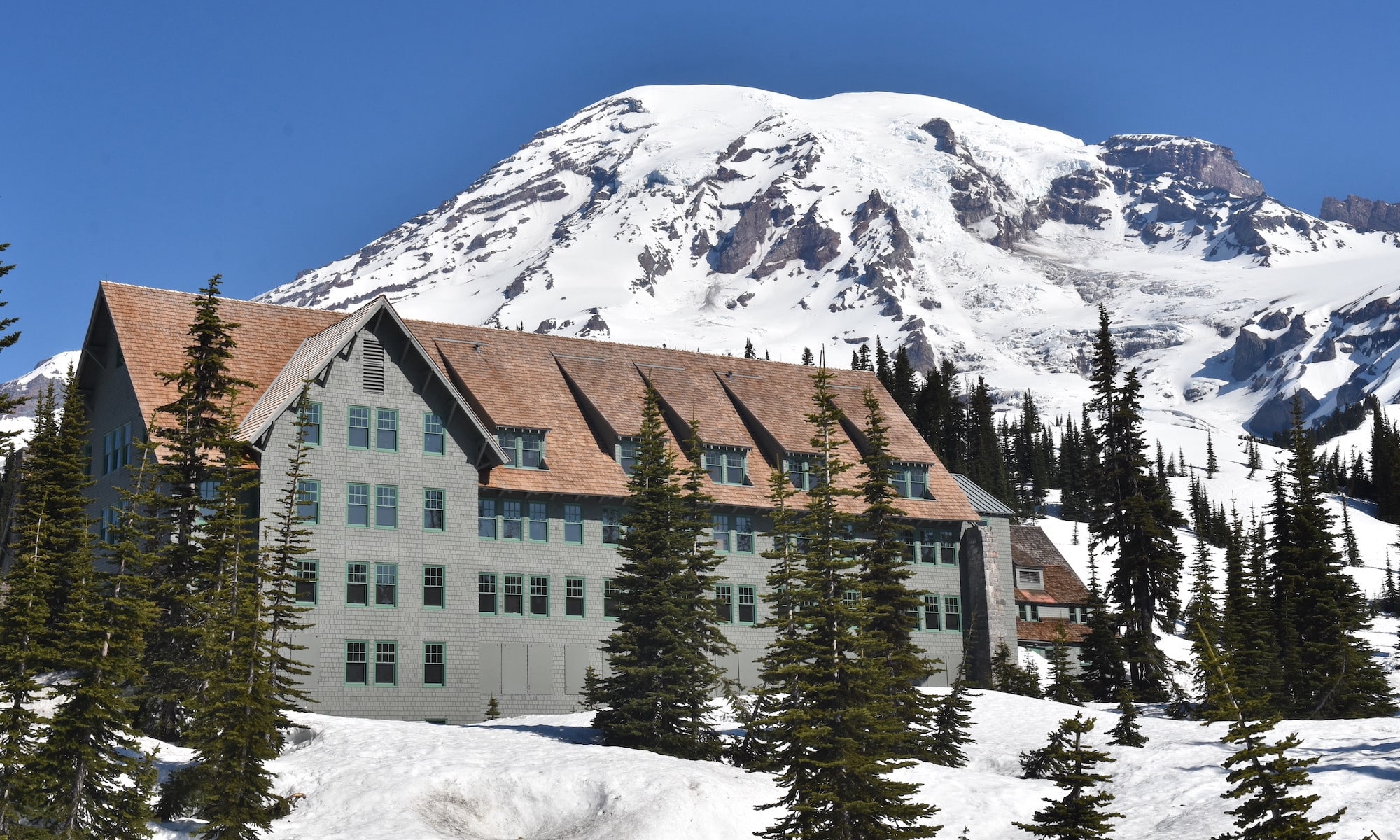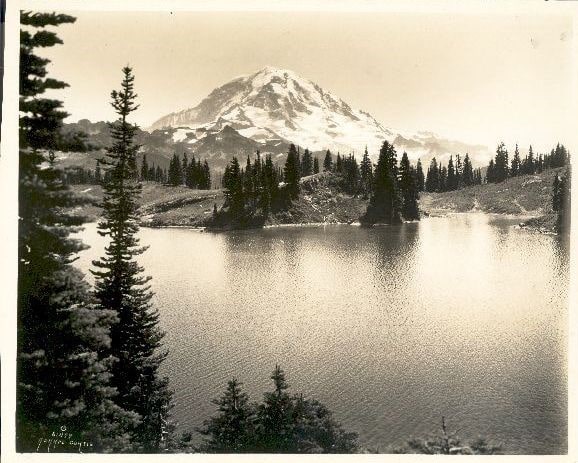
Imagine taking a ski lift from Mt. Rainier’s Paradise station at 5,400 ft to the 10,000 ft Camp Muir level where you would have endless terrain to snowboard or ski. One could certainly see why this precise location would be so enticing and attractive to set up a permanent ski lift. You could easily argue that the south part of Mt Rainier (Tahoma) affords some of the most spectacular scenery in the PNW.
Why didn’t a ski lift/tram ever get the green light on Mt. Rainier?

Congress established Mt. Rainier as a “National Park” on March 2, 1899. It’s the 5th oldest National Park and was also born after the creation of the National Forest System. This National Park status makes scenarios of building a ski lift on federally protected lands tough to come to fruition. Despite these odds, several ideas were proposed by various organizations and individuals like the Rainier National Park Company (RNPC) and Governor Arthur B. Langlie. In 1921, a proposed cogwheel starting at Paradise (5400 ft) would go all the way up to the summit of Mt. Rainier, which is known as the Columbia Crest at 14,410 ft.
The next idea took place in the 1930s when a bold and ambitious group of Northwest skiers pushed heavily to get a permanent ski lift established. Then in 1953, Governor Arthur B. Langlie (governor at the time) had the idea of developing a cogwheel tram starting at Paradise, which would then travel up to Camp Muir at ~10,000 ft. All of these ideas were denied by the National Park Service (NPS) time and time again.

This quote below sums it up beautifully…..
“The skiers’ growing emphasis on speed, technique, athletic competition, and urban amenities led some park officials to view them as an unwelcome user group … [The park’s] landscape architect … argued that the growing popularity of the park as a downhill ski area was insidious, because skiers, as a group, were pushing for developments that would be injurious to the national park’s broader purpose of providing for the public’s enjoyment of nature.” -Theodore Catton

All of these repeated efforts to build a ski lift or tram never changed the National Park Service’s stance on this matter. With the growth of winter sporting activities during this time frame, this momentum spread to other notable regions in the Washington Cascades like Snoqualmie, White, and Stevens Pass. This increased demand and popularity in winter sports helped ease the incessant development pressure that Mt. Rainier National Park was facing at the time throughout the early to mid-1900s.
This leads me to my next and final question to ponder and that is Timberline at Mt. Hood (Wy’East). This famous ski area is in many ways a mirror image of what Mt. Rainier/Paradise could have turned into if the ski lift was made a reality. For comparison, the Timberline ski area is on the south side of Mt Hood, which is also where the ski lift area would have been set up on Mt. Rainier. Secondly, both peaks are the most visited hotspots in their respective states. Thirdly, the Timberline ski area offers the most vertical terrain at 3690 ft in the Pacific Northwest. Mt. Rainier could have easily matched this or exceeded this since it’s taller by ~3000 ft.